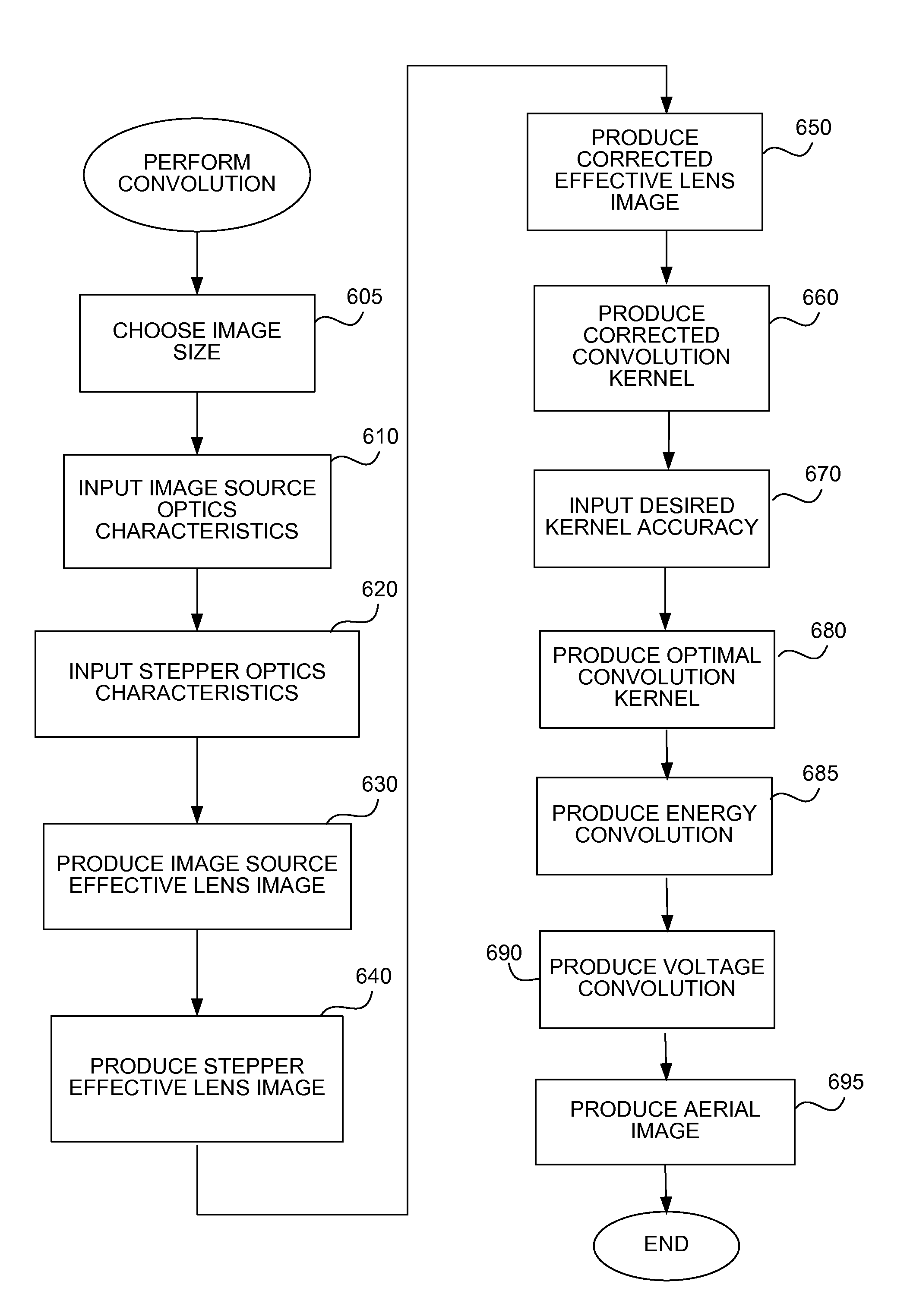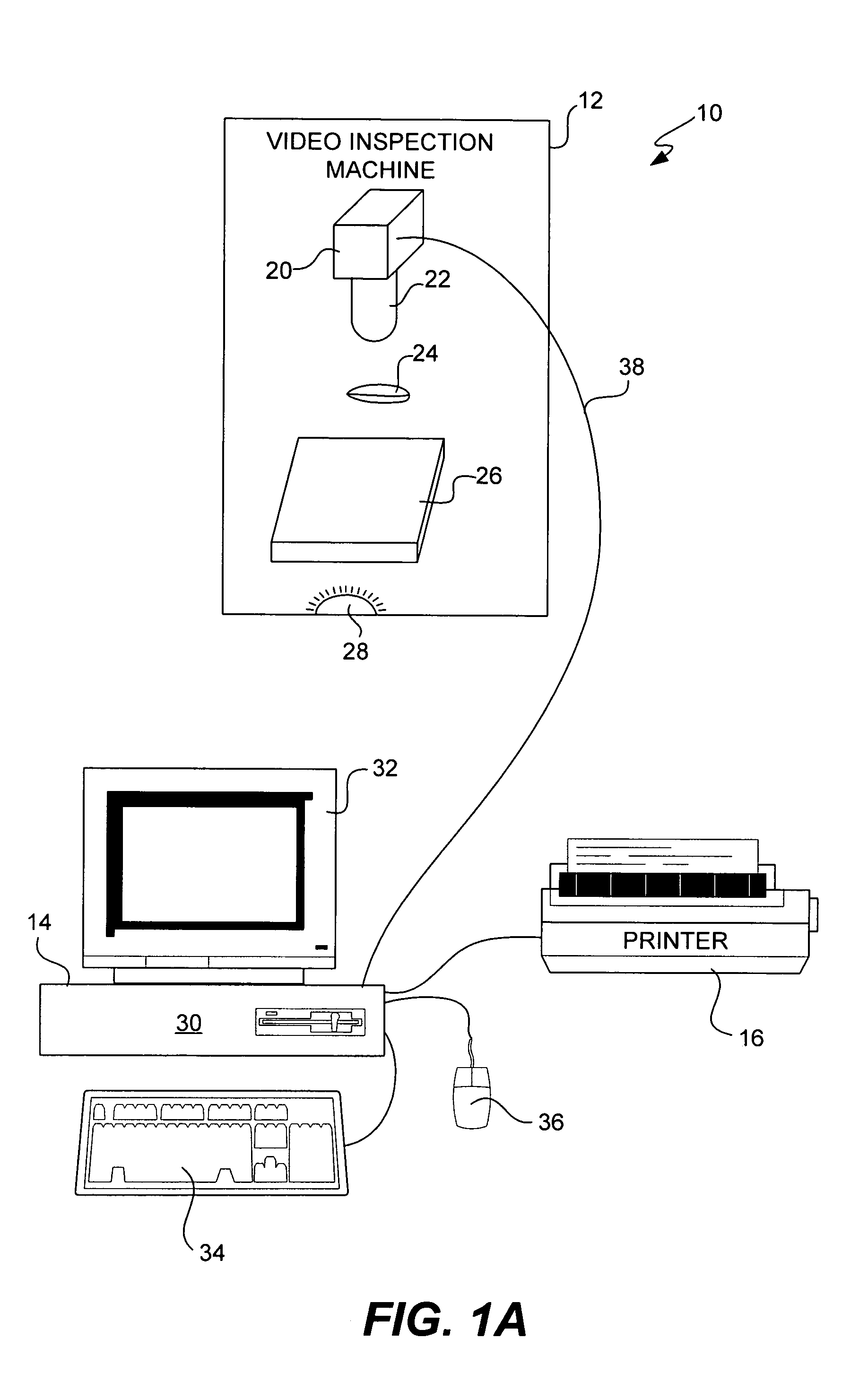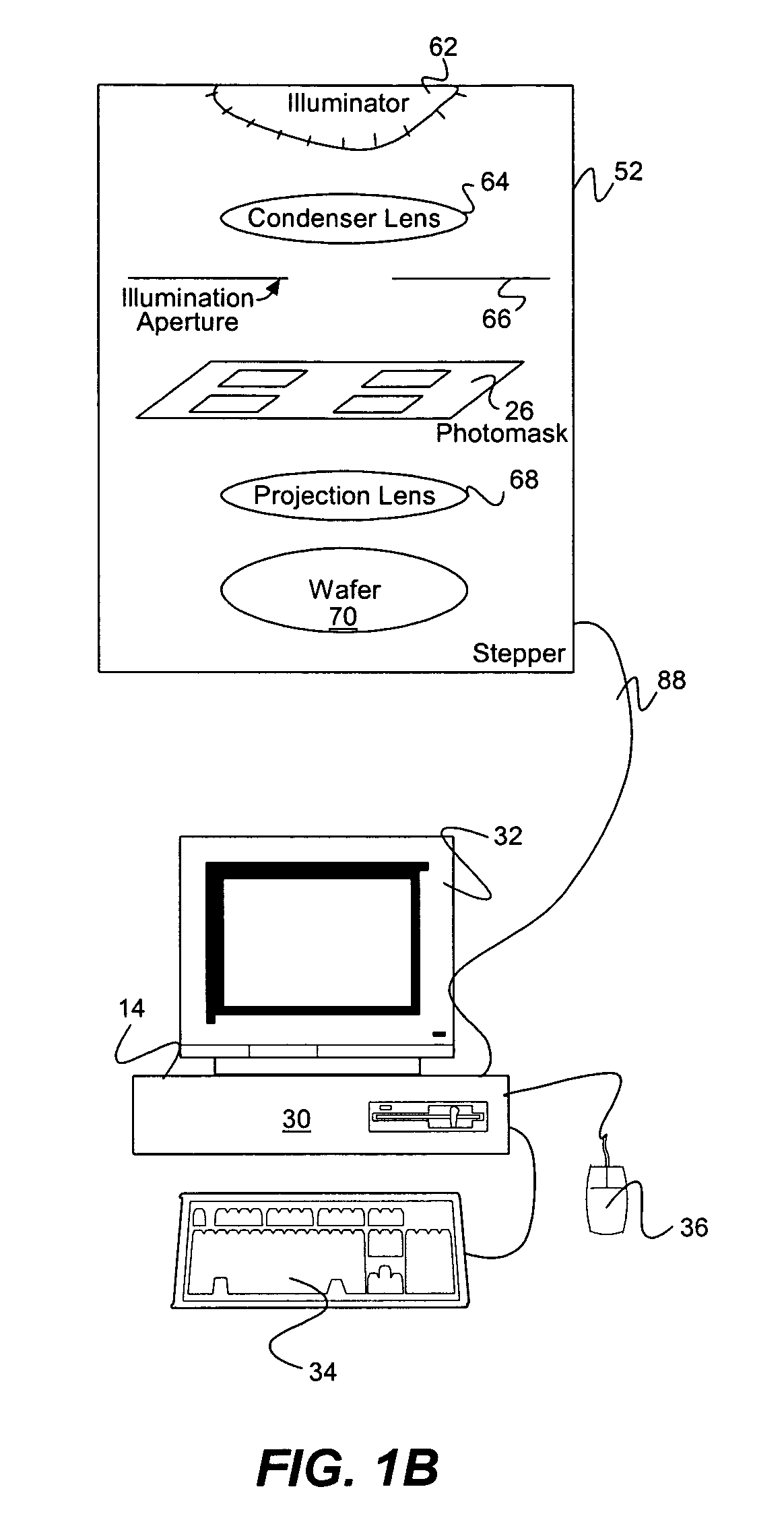Fast image simulation for photolithography
a photolithography and image technology, applied in the field of photolithography, can solve the problem that the simulation technique is not perfect, and achieve the effect of reducing false defect reports, facilitating simulation, and increasing the sensitivity of inspection tools
- Summary
- Abstract
- Description
- Claims
- Application Information
AI Technical Summary
Benefits of technology
Problems solved by technology
Method used
Image
Examples
first simulation embodiment
[0034]As pointed out above, the present invention models blurring and edge diffraction to quickly produce an accurate simulation. As is commonly known, an image taken of a photomask (using a typical video inspection machine) having sub-micron dimensions will appear blurred as described above in the Rayleigh criterion by the resolution of the optical system. This blurring is corrected, typically by deconvolution. Images that come directly from the mask design, without optics, will not require this correction.
[0035]Photons that come closer to the edge than Res / 4.4, where Res is the Rayleigh resolution, are diffracted beyond the opening of the objective lens and appear to be blocked by the dark area of the photomask. This diffraction causes dark areas to appear larger at low optical resolution than at high resolution. A dark line, which consists of two edges, is observed to be Res / 2.2 larger than observed with an SEM, and a clear line is observed to be smaller by the same amount. Becau...
second simulation embodiment
[0045]In a second simulation embodiment, optimizations are used to speed up generation of the simulation, by a factor of 2 to 5× faster. For example, as dilation and erosion are sequentially applied to the image after deconvolution, it is possible to combine these two processing steps into a single erosion step. The single step ends up being an erosion (rather than a dilation) because the need to slightly widen lines (to match the stepper resolution) slightly outweighs the need to narrow lines due to edge diffraction in the source image optics. In other words, an erosion is performed, but the amount is reduced because of the dilation required. Or more simply, lines are widened to compensate for the stepper resolution, but not quite so much in order to compensate for the diffraction in the source image.
[0046]Also, because the source image resolution is high compared to the stepper resolution, the deconvolution step is not needed because image 310 is sharper than image 350. Since the ...
PUM
 Login to View More
Login to View More Abstract
Description
Claims
Application Information
 Login to View More
Login to View More - R&D
- Intellectual Property
- Life Sciences
- Materials
- Tech Scout
- Unparalleled Data Quality
- Higher Quality Content
- 60% Fewer Hallucinations
Browse by: Latest US Patents, China's latest patents, Technical Efficacy Thesaurus, Application Domain, Technology Topic, Popular Technical Reports.
© 2025 PatSnap. All rights reserved.Legal|Privacy policy|Modern Slavery Act Transparency Statement|Sitemap|About US| Contact US: help@patsnap.com



